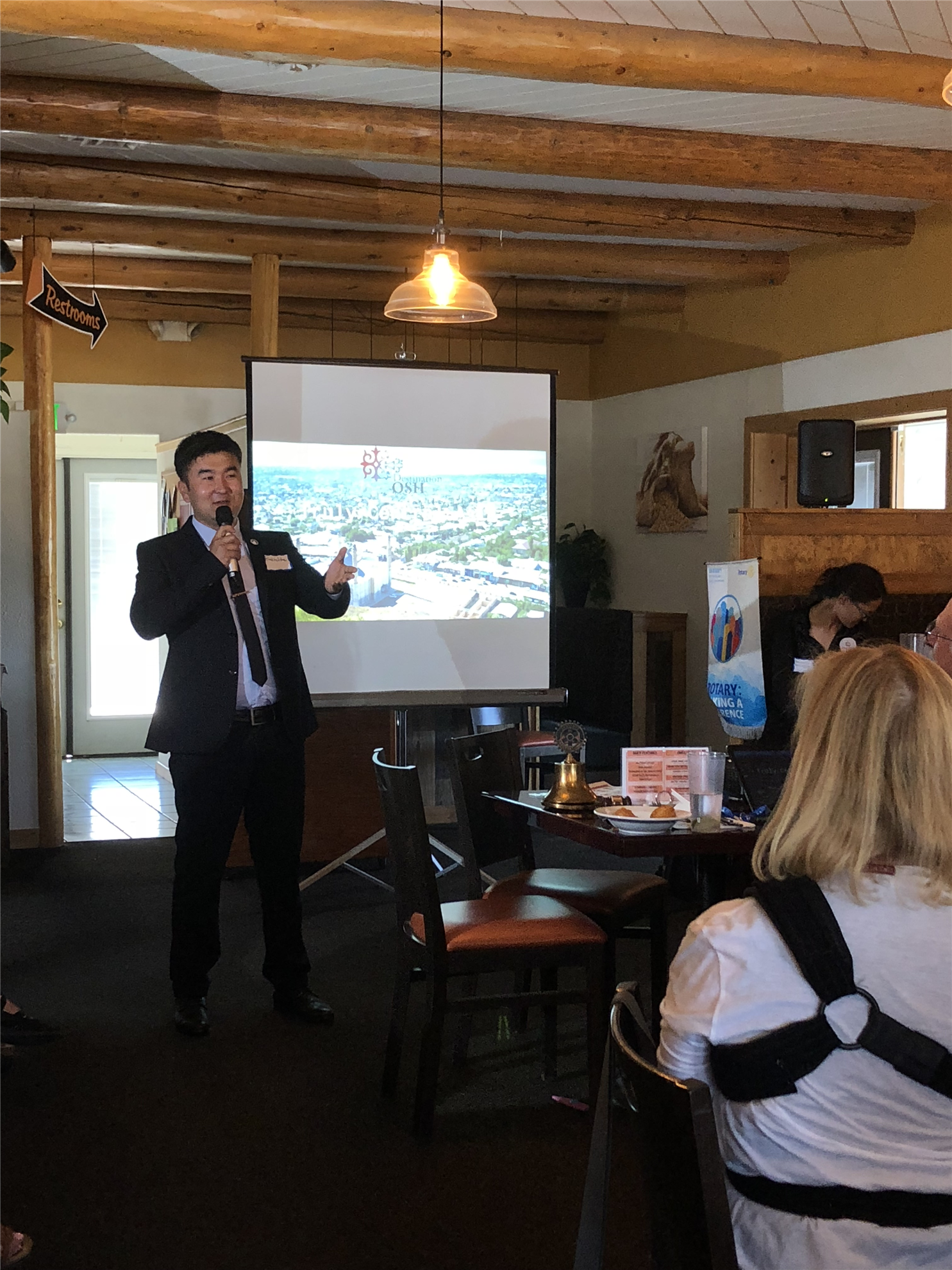

Aman began the presentation with comments of appreciation for the very nice time he and his fellow Kyrgyz had enjoyed, and the opportunity to learn about tourism they had been afforded. The Pagosa Springs area is very similar to Kyrgyzstan, he said, so the lessons they will take home are strongly applicable.
A video of tourist venues and activities was played, confirming the similarities pointed out by Aman, including mountainous terrain, bodies of water, forests with evergreens and aspens, traditional lifestyles, horses, twisty roads, skiing, hiking, water sports – and hot springs.
Aman provided a brief summary of the country’s history, noting the population of 6 million is nearly ¾ Kyrgyz, who originally lived as nomads. He called it a cross-roads of culture, noting that since the heydays of the Silk Road as a major route for world trade, Kyrgyzstan has attracted peoples from Chinese to Russians to Muslims. The country, he said has been ruled by different empires, most recently the former USSR, before it became independent in 1991. It is relatively small, being roughly equivalent in area to the state of Nebraska. It has quite tall mountains, with several peaks over 24,000 feet.
One of the major events in Kyrgyzstan, Aman said, is the “Nomad Games,” that involve skills celebrating the country’s nomadic heritage. Surprisingly, he recalled that Americans have competed in the games, including a team of Peace Corps volunteers, as well as a team of cowboys – the latter presumably in a competition involving horsemanship. (In a private conversation with your reporter, Aman commented on the presence in Pagosa Springs of the Parelli Natural Horsemanship company, reflecting the importance of horses in Kyrgyz history.)
Aman reported that the US Agency for International Development is heavily engaged in encouraging the growth of tourism in Kyrgyzstan through its Business Growth Initiative. Four regional Destination Management Organizations (DMOs) have been formed to lead the effort. DMOs, he said, bring together stakeholders to provide marketing, facilities development, event sponsorship and web site presentations.
The DMO in Karakol, where Aman lives, was formed in 2015. The city is in the eastern section of Kyrgyzstan. He reported that many tourists presently visit from Europe and Israel. In a familiar-sounding note, Aman added that one objective of the DMO is to increase visitors’ length of stay, by expanding the array of activities available for their enjoyment.
Beksultan spoke next. He is from Osh, a City in southwestern Krygyzstan, where he is the executive director of the regional DMO. He agreed with Aman on the strong similarities between Pagosa and their homeland, and commented that after his visit he is “really motivated to get home to work on development of tourism.”
Osh, Beksultan told us, is a very ancient city, founded even before Rome, and today featuring many buildings from the 12th and 13th centuries. He mentioned a major attraction is the Osh Fest, which celebrates the historical Silk Road, offering among other events reenactments of caravans with camels, horses and yaks.
The people of his country are friendly, outgoing and helpful, Beksultan said, extending invitations to all to visit. (President Kim Moore welcomed that offer, and expressed an intention to form a group to visit Kyrgyzstan next year.)
Bigamai was the last of our visitors to speak. She is from the DMO in the Issyk-Kul Lake South Shore region. The Lake – one of the largest, deepest and highest in the world, but which never freezes (it is slightly saline) – is a major attraction in the region.
 Pagosa Springs Rotary Club
Pagosa Springs Rotary Club